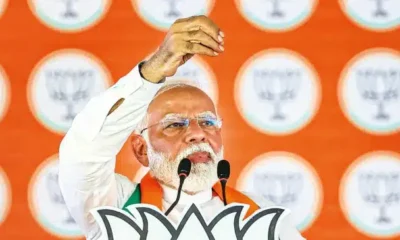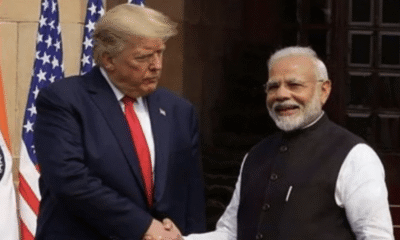
|
Getting your Trinity Audio player ready...
|
(The article was originally published in Indian Express on April 13, 2024 as a part of Dr Madhav’s column titled ‘Ram Rajya’. Views expressed are personal.)
B R Ambedkar is remembered for his great contribution to the meticulous drafting of the Constitution of free India. Some seek to belittle his contribution by arguing that the drafting was done by Sir B N Rau and a drafting committee. B N Rau did indeed perform yeoman’s service as the advisor to the drafting committee. He travelled extensively across the world and held discussions with many jurists before presenting the first draft in February 1948. From that point on, it was Ambedkar who steered the document’s creation inside and outside the Constituent Assembly for two years.
Although seven members were appointed to the drafting committee, one resigned, and one left for America. Out of the remaining five, one passed away, one remained busy with the work of the royal court, and two others did not live in Delhi and were often unwell. No vacancies were filled. As a result, despite his ill health, Ambedkar had to shoulder much of the burden of drafting the Constitution and incorporating 2,473 amendments. Rajendra Prasad, chairman of the Constituent Assembly, acknowledged this: “I have realised as nobody else could have, with what zeal and devotion the members of the Drafting Committee and especially its Chairman, Dr Ambedkar, in spite of his indifferent health, have worked.”
Ambedkar’s experiences of discrimination
However, another important contribution of Ambedkar’s, largely forgotten, was the Hindu Code Bill. Ambedkar had to endure caste discrimination throughout his life. At five years old, he saw that no barber would trim his hair, forcing his sisters to cut it haphazardly. He was made to sit in a corner of the classroom. He was thrashed for drinking water from a public well. While travelling to visit his father in Koregaon, no cart agreed to transport him and his brother from the railway. Eventually, one agreed at double the fare and insisted that the passengers drive the cart, while the driver walked along outside. “This incident holds an important part in my life. I would have been barely nine years of age then, but the mark that this episode has left can never be wiped out,” Ambedkar recalled later.
Ambedkar was lucky to secure scholarships to study abroad. Within six years, he acquired an MA, PhD, DSc, LID, DLitt, Bar-at-Law and a host of other degrees. Yet, when he returned to India and joined a high position in Baroda Maharaja’s secretariat in January 1913, the ill-treatment persisted. No one was willing to rent their house to this “untouchable”. With the help of a friend, he tried to live in a Parsee hostel under an acquired Parsee name. In 10 days, the community got wind of it, and attempted to violently attack him. Maharaja Sayajirao, who was kind enough to give Ambedkar a job, was helpless in providing accommodation out of fear of reactionary elements.
Ambedkar returned to Mumbai as a professor at Sydenham College, but there too, he was not allowed to use the pitcher and glasses in the staffroom. At the Bombay High Court, this lawyer who was called to the bar at Gray’s Inn, London, couldn’t get any clients from the “touchable” community, nor would other solicitors allow him to come close to them. Even as a member of the government-appointed committee to study the educational situation of the “untouchables” in 1929, he was not allowed to enter a school by the headmaster.
Ambedkar’s Hindu reform
Such experiences convinced Ambedkar that Hinduism required major reform. His first public act of defiance was the burning of Manusmriti in December 1927, which he got done by Gangadhar Nilkanth Sahasrabuddhe, a Brahmin. This was followed by the famous satyagraha at the Kalaram temple in Nashik in 1930.
This determination to restructure Hinduism based on equality prompted Ambedkar, as the law minister in the first government in 1950, to embark on framing a Hindu Code Bill. Before drafting the Bill, he appointed many Sanskrit scholars to translate important texts and shlokas. “The Hindu Code Bill was being sculpted with Saheb sitting in the conference with Hindu religious pundits, resolving doubts, and finding ways out”, wrote Ambedkar’s Saraswat Brahmin wife, Savita Ambedkar.
He got a 39-page booklet published, clarifying various aspects of his proposed Hindu Code Bill, and had it distributed among MPs. Jawaharlal Nehru was initially enthusiastic and told Ambedkar, “I will die or swim with the Hindu Code Bill”. But soon a strong resistance surfaced from within the Congress as well as sections of the Opposition including Karpatri Maharaj’s Ram Rajya Parishad. Nehru developed cold feet and wrote to Ambedkar in August 1951 that “you should take things easy as there is opposition inside and outside to the Hindu Code Bill, the Cabinet has decided that it should be taken up at the beginning of September, 1951”. When the discussion finally began in Parliament, Congress allowed its members to vote according to their conscience. No whip was issued leading to long and meaningless speeches by members exhausting time. In the end, due to a shortage of time, Ambedkar’s Hindu Code Bill was shelved.
“If you want to maintain the Hindu system, Hindu culture, the Hindu society, do not hesitate to repair where repair is necessary. The Bill asks for nothing more than repairing parts of the Hindu system which almost became dilapidated”, Ambedkar fervently appealed to no avail.
Nehru takes over
In the end, Ambedkar resigned from the Cabinet in protest. But, starting in 1952, the same contents were adopted as four different Bills championed by Nehru himself — the Hindu Marriage Act, Hindu Succession Act, Hindu Minority and Guardianship Act, and Hindu Adoptions and Maintenance Act — and the Hindu Code Bill became a reality in 1958.
Could Ambedkar have inferred the rejection of the same law piloted by him as a manifestation of the deep-rooted caste prejudice? Could that feeling have led finally to his conversion to Buddhism in 1956? These questions beg answers. But Ambedkar’s contribution to Hindu Code Bill should always be remembered.




